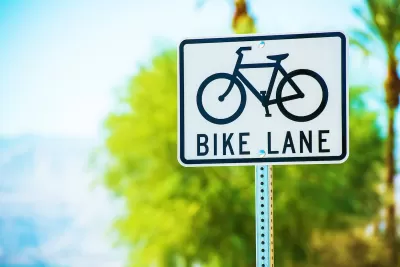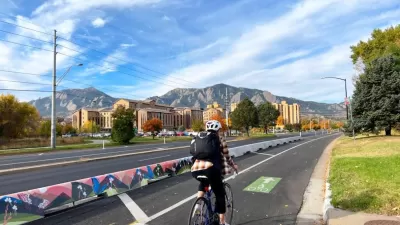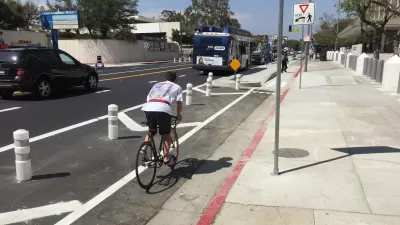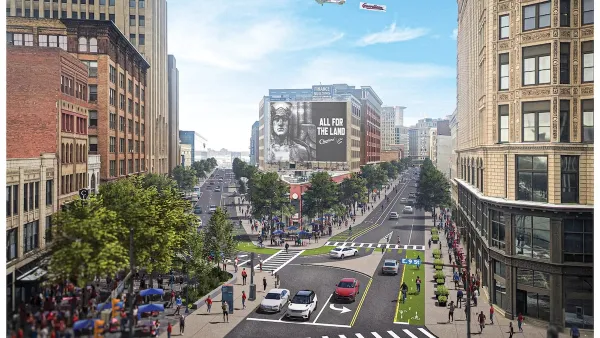Although the one-way bike lane won’t be protected by physical barriers, the proposal is an improvement over the mayor’s initial plan to only include sharrows on the Austin Street project.

After pushback from local bike advocates, Houston Mayor John Whitmire walked back plans to kill a protected bike lane on Heights Boulevard, indicating that the street will now receive a one-way, unprotected bike lane, reports Ryan Nickerson in the Houston Chronicle.
Construction crews had already removed “armadillo”-style barriers from Heights Boulevard and, on March 31, began removing a protected bike lane from Austin Street in Midtown. Whitmire said the new Heights Boulevard design will “improve the mobility and the access of the homeowners and certainly the fire station and it will allow the bike lane to continue.”
Mayor Whitmire has come under fire in recent months for his efforts to dismantle Houston’s bike infrastructure. “When asked whether the new lane will include a physical separation — such as a curb or an armadillo — Whitmire simply said the project would follow the Heights Boulevard model. That lane is unprotected, though it provides a dedicated space for cyclists next to vehicle traffic.” Optimistically, the change could signal that the mayor is listening to the public.
FULL STORY: Pivoting, Whitmire says Austin Street will get a dedicated bike lane, but no physical barrier

Planetizen Federal Action Tracker
A weekly monitor of how Trump’s orders and actions are impacting planners and planning in America.

Congressman Proposes Bill to Rename DC Metro “Trump Train”
The Make Autorail Great Again Act would withhold federal funding to the system until the Washington Metropolitan Area Transit Authority (WMATA), rebrands as the Washington Metropolitan Authority for Greater Access (WMAGA).

The Simple Legislative Tool Transforming Vacant Downtowns
In California, Michigan and Georgia, an easy win is bringing dollars — and delight — back to city centers.

In These Cities, Most New Housing is Under 441 Square Feet
With loosened restrictions on “micro-housing,” tiny units now make up as much as 66% of newly constructed housing.

Albuquerque’s Microtransit: A Planner’s Answer to Food Access Gaps
New microtransit vans in Albuquerque aim to close food access gaps by linking low-income areas to grocery stores, cutting travel times by 30 percent and offering planners a scalable model for equity-focused transit.

This City Will Pay You to Meet Your Neighbors
A North Kansas City grant program offers up to $400 for residents to throw neighborhood block parties.
Urban Design for Planners 1: Software Tools
This six-course series explores essential urban design concepts using open source software and equips planners with the tools they need to participate fully in the urban design process.
Planning for Universal Design
Learn the tools for implementing Universal Design in planning regulations.
Smith Gee Studio
City of Charlotte
City of Camden Redevelopment Agency
City of Astoria
Transportation Research & Education Center (TREC) at Portland State University
US High Speed Rail Association
City of Camden Redevelopment Agency
Municipality of Princeton (NJ)





























